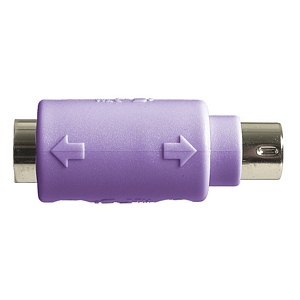Frequently Asked Questions
What is a keylogger?
A keylogger records whatever is typed on a keyboard. Our keyloggers operate completely independently from the operating system, so they are able to record user names and passwords, even when they are hidden by asterisks (********).
What are the used for?
We sell keyloggers so that parents can help keep their kids safe and employers can help keep their employees productive. By recording everything that is typed, a hardware keylogger is a simple and effective way to check and see how a computer has been used.
Are they legal?
First the disclaimer: We aren't lawyers, we don't pretend to be lawyers. We can't and don't offer legal advice. That is what real lawyers are for. Ask one. With that said, we can provide some very general guidelines. These vary depending on where you live. Again, ask a lawyer.
- Generally, parents are allowed to monitor their minor children's computer use.
- Employers may generally monitor how company owned computers are used, provided they post clear notices to everyone who might possibly use the computer. There are sometimes very specific legal requirements - You really do need to ask a lawyer before proceeding.
- It is generally NOT LEGAL to monitor any adult unless very clear notice is posted. This includes spouses, boyfriends, girlfriends, etc... Don't do it.
Will the PS/2 keyloggers work on USB keyboards with special adapters?
No. We have seen some "special adapters" that are supposed to make them work. We have thoroughly tested them. They don't work. Also, please note that the extra part that comes with the KeyLlama PS/2 is actually a "Download Accelerator" and is only used to read the data. It WILL NOT work in conjunction with a USB keyboard!
Can I retrieve logged data on a different computer than it was recorded?
Yes, that is no problem. Just follow the specific directions for your keylogger.
Can you connect and disconnect the keylogger with the power on?
For PS/2 keyloggers it is discouraged, though we have never had a problem with it. For the USB keyloggers it is perfectly fine to hot-plug the keyboard and logger.
What happens when the memory fills up? The KeyLlama will stop recording. It will not begin recording again until the memory has been erased. This is rarely a problem though since a 4MB keylogger holds 2,000 pages of text!
Can I erase the recorded data or will my keylogger fill up and become useless?
All of our keyloggers can be erased and reused millions of times.
When I shift my KeyLlama USB into Flash Drive Mode, the Keyboard stops working! That is normal. The device can act as either a keylogger or as a flash drive, but it can't be both things at once. Use your mouse to open the log file.
When I shift my KeyLlama USB into Flash Drive Mode, both the Keyboard and the Mouse stop working! This happens with wireless keyboards or when you have the mouse plugged into a keyboard that has a built-in USB Hub (see the above answer about the keyboard not working).
To get around this, after the KeyLlama has been shifted into Flash Drive mode, unplug the keyboard from the KeyLlama (leaving the KeyLlama plugged in) and plug the keyboard into any open USB port. In a few seconds the Keyboard and the mouse will start working and you can view the log file normally.
My KeyLlama USB Premier or PS/2 doesn't record the number pad numbers! (does not apply to the KeyLlama Value)
The KeyLlama has three different settings for the keys that are captured. By default, it is set to Medium. On this setting, it captures all of the "typewriter" keys, including the upper numbers, but it does not capture the Number Pad numbers.
You can change one line in the config.txt file so that it records all keys. Follow your keylogger's directions for putting it into Flash Drive Mode, then double-click the config file and change the line that reads: LogSpecialKeys=Medium to LogSpecialKeys=Full
Be very careful that you don't misspell or leave a space in the wrong spot. Then save the file. Wait a moment to ensure that all data has finished saving, then unplug the KeyLlama and plug it back in. It will now record all keystrokes.
On the PS/2 model, this can also be changed using the menu program by selecting Configuration Options and then Special Keys Logging.
Most people prefer the Medium setting because at the Full setting, the logs can become a bit cluttered and harder to read. Generally, we recommend you only set it to Full in order to capture a password that may include a Num Pad number and then later set it back to Medium.
Carefully following the "Quick Start Guide" that came with the keylogger will resolve most problems, but here is some additional help:
Still not working? Try disconnecting all other USB devices except the mouse and keyboard. USB printers are especially prone to interfering. If the keylogger works once the other devices are disconnected, try reconnecting them with the printer and the keylogger in opposite corners of the USB hub.
* On a very few keyboards, you may need to substitute the numbers kbs for the letters vmp.
We constantly test to ensure compatibility with all keyboards. There are many keyboard manufacturers who don't follow established standards (USB keyboards only - PS/2 keyboards are never a problem). Our engineers have been able to work around this with every "problem" keyboard we have found so far - but, there is always the slight chance that you have a keyboard we haven't yet tested.
If we determine you have a keyboard that isn't compatible, we will gladly refund your money (and go out and purchase a copy of the offending keyboard so our engineers can find a solution). We take this issue very seriously but hope you can understand it sometimes isn't as straightforward as you might think.




